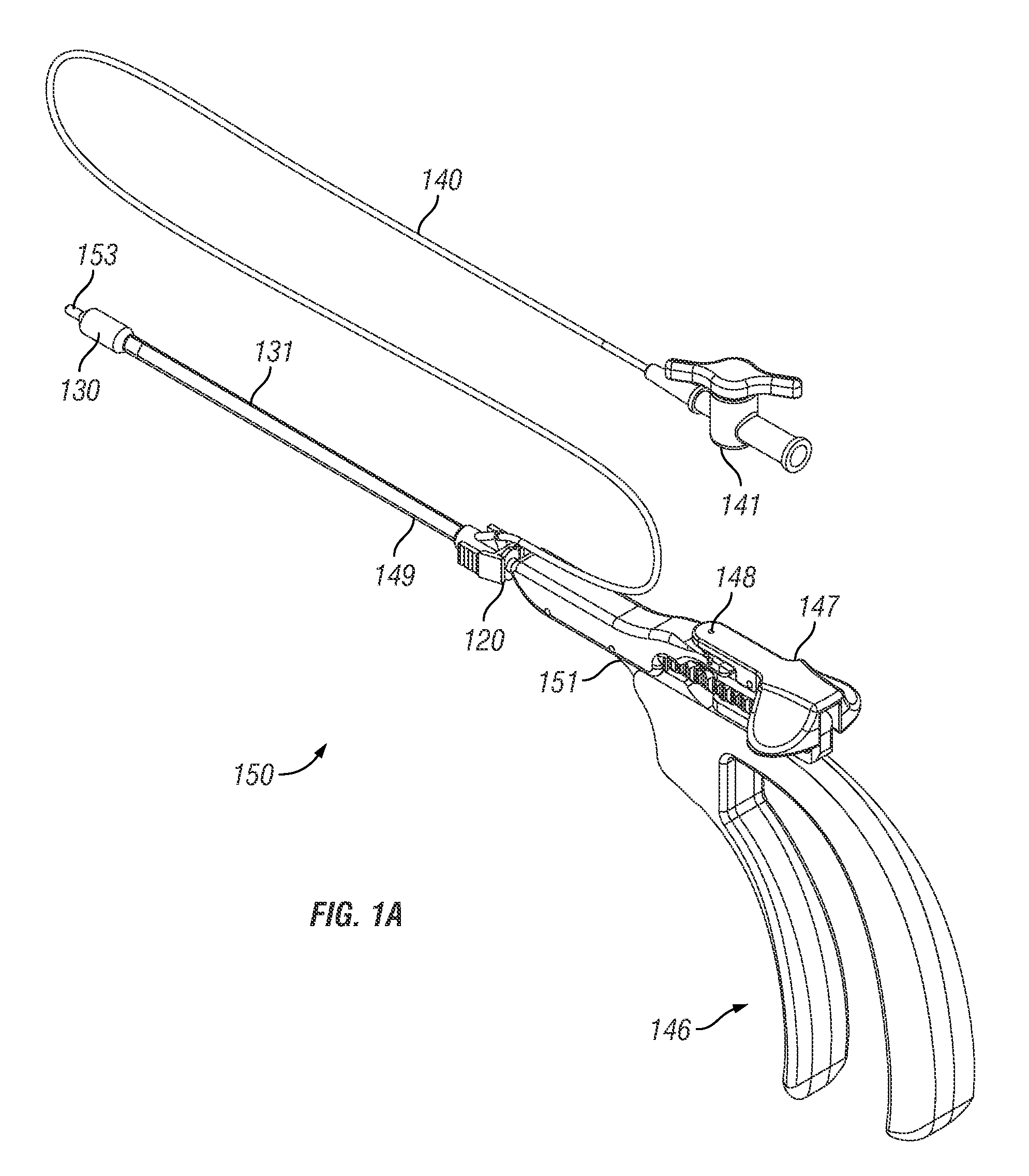Systems, Devices and Methods for Providing Therapy to an Anatomical Structure
a technology of anatomical structure and system, applied in the field of systems, devices and methods for providing therapy to anatomical structure, can solve the problems of large patient population that cannot tolerate the prescribed medications or are not considered candidates, and cannot offer mechanical therapy to these patients, so as to reduce the number of different devices needed and reduce the cost of the procedure.
- Summary
- Abstract
- Description
- Claims
- Application Information
AI Technical Summary
Benefits of technology
Problems solved by technology
Method used
Image
Examples
Embodiment Construction
[0143]Exemplary embodiments of the present disclosure provide systems, devices and methods for providing therapy to anatomical structures. In particular embodiments, the therapy comprises dilation of a paranasal sinus. Exemplary embodiments provide the ability to articulate an instrument and maintain the instrument in the articulated position when it is subjected to external forces. This rigidity of the articulated instrument can allow a user to extend the instrument into a paranasal ostium that may include granulation or scar tissue.
[0144]Multiple exemplary embodiments are disclosed in the description that follows. It is understood that various components of the disclosed embodiments can be combined to form additional exemplary embodiments. For example, a handle portion from one disclosed embodiment may be combined with a shaft portion of another disclosed embodiment. Such combinations are within the scope of this disclosure, which is not limited to the specific combinations of fea...
PUM
| Property | Measurement | Unit |
|---|---|---|
| diameter | aaaaa | aaaaa |
| diameter | aaaaa | aaaaa |
| diameter | aaaaa | aaaaa |
Abstract
Description
Claims
Application Information
 Login to View More
Login to View More - R&D
- Intellectual Property
- Life Sciences
- Materials
- Tech Scout
- Unparalleled Data Quality
- Higher Quality Content
- 60% Fewer Hallucinations
Browse by: Latest US Patents, China's latest patents, Technical Efficacy Thesaurus, Application Domain, Technology Topic, Popular Technical Reports.
© 2025 PatSnap. All rights reserved.Legal|Privacy policy|Modern Slavery Act Transparency Statement|Sitemap|About US| Contact US: help@patsnap.com



